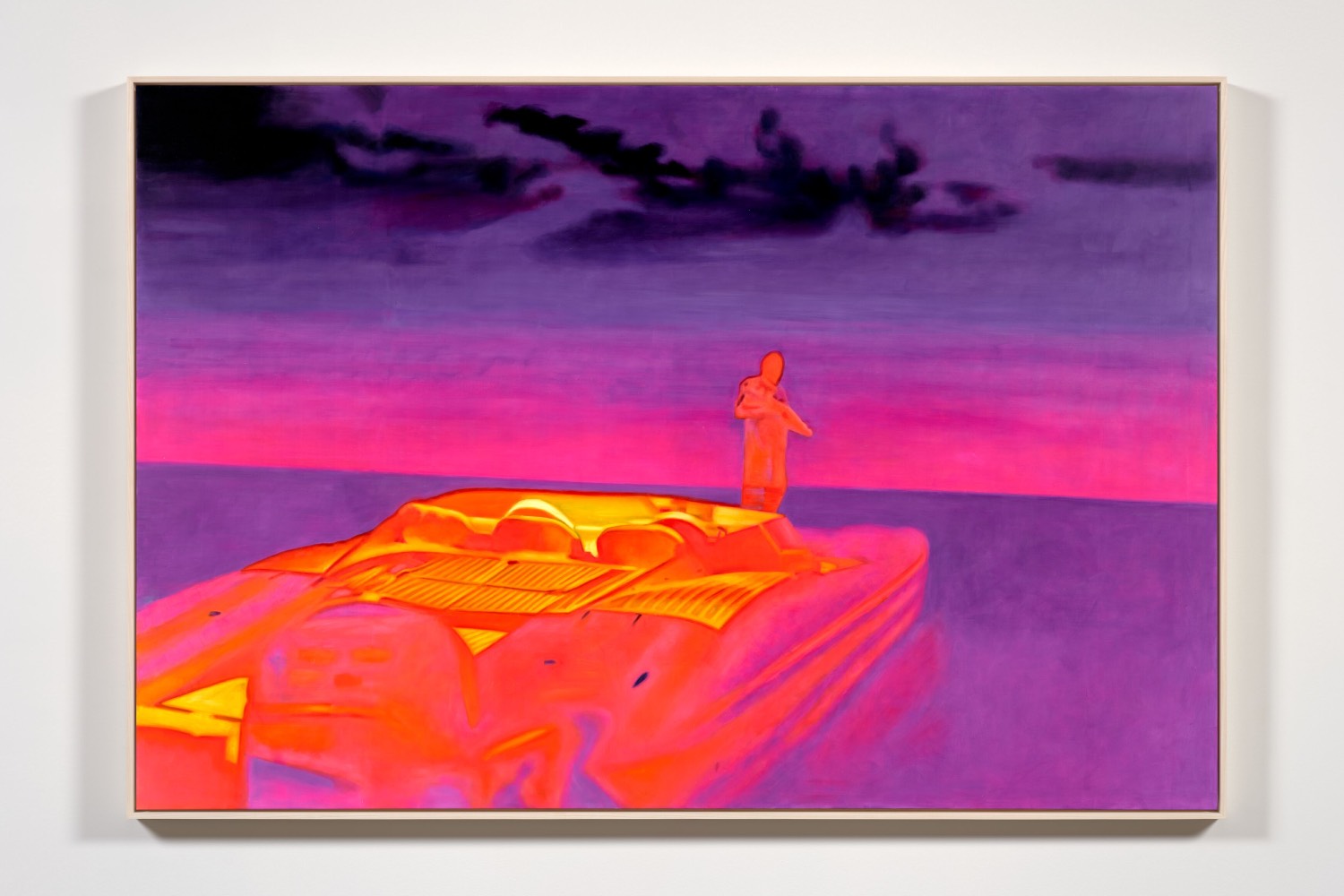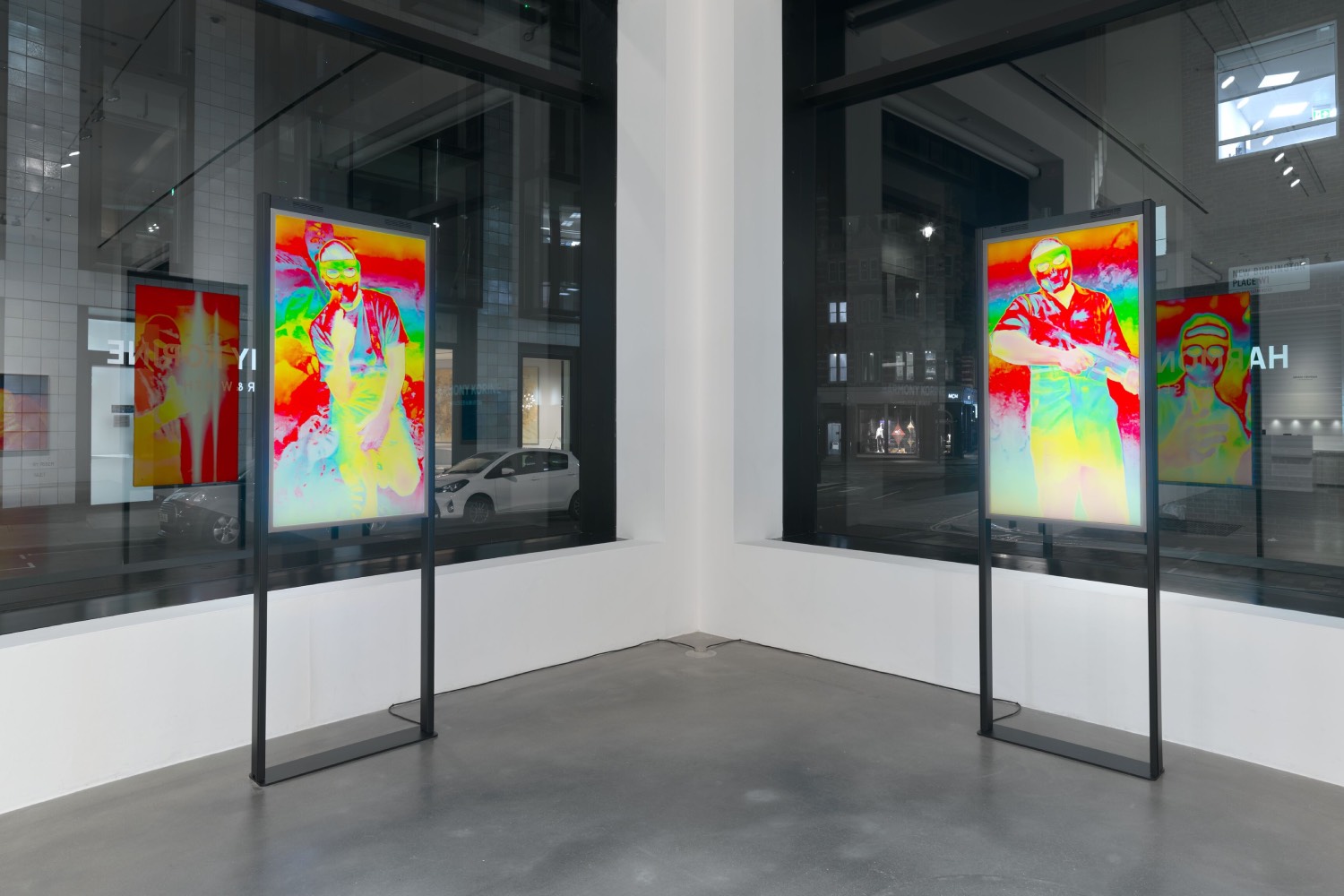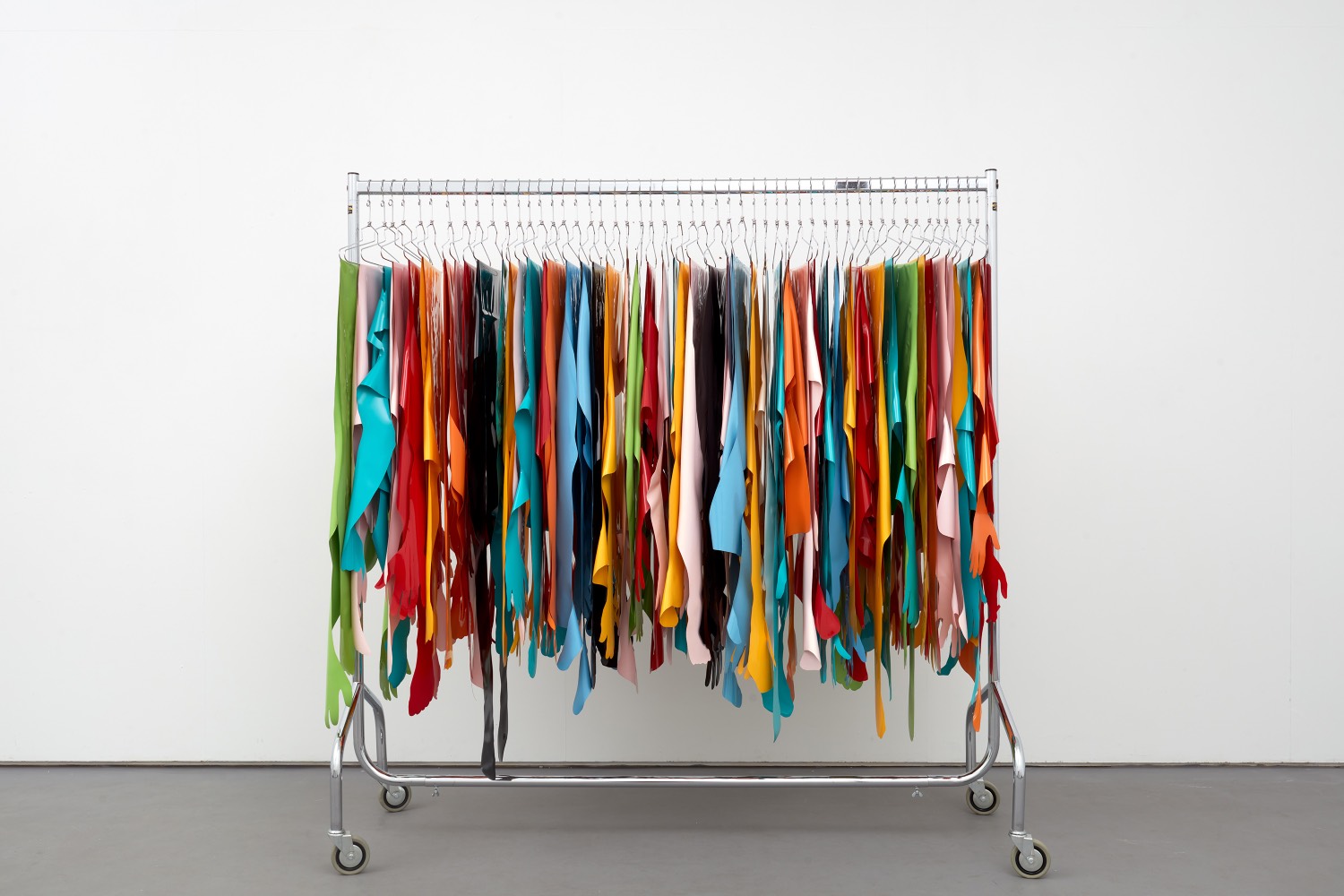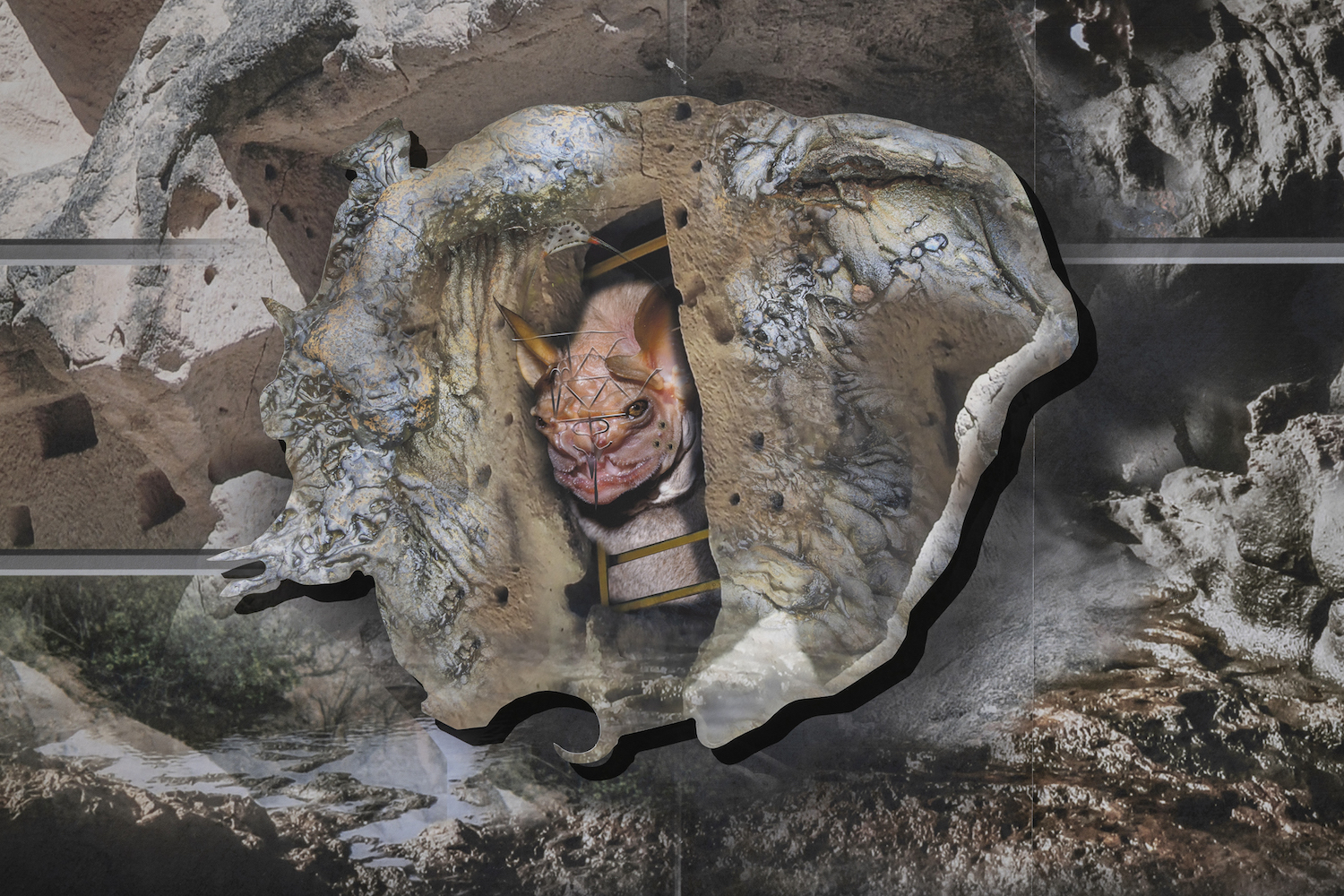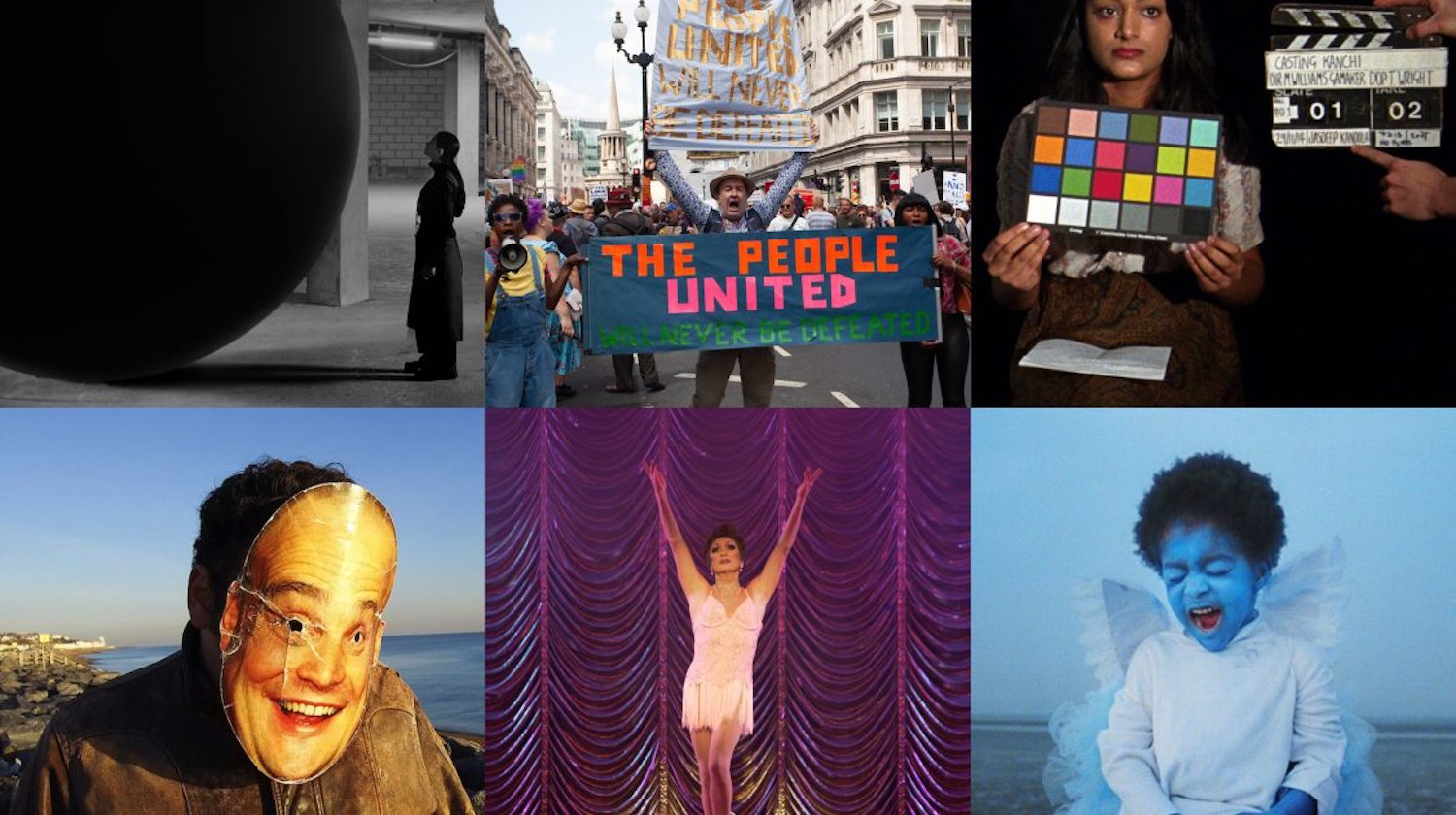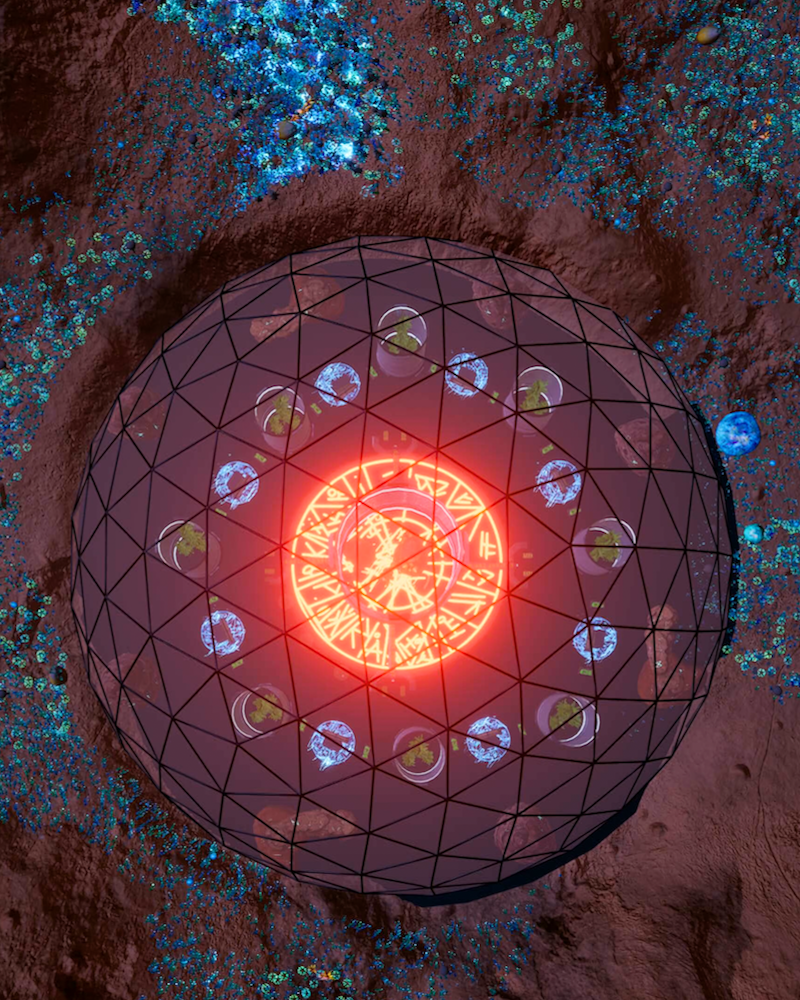As Oscar Wilde stated in An Ideal Husband (1895), “To be natural is such a very difficult pose to keep up.” Maintaining a natural demeanor requires effort and a commitment to individuality despite societal expectations. For the world’s largest gallery event, being natural was not an option, and rightfully so. The 2024 London Gallery Weekend, conceived as the Met Gala of the European art world, epitomized the performative and camp essence of the grandiose white-cube exhibit. Dazzling displays transformed the city into a visual feast, offering an immersive experience defined by artifice and stylization. Hopping from one gallery to another, it’s easy to fall into an overriding view of the world as an aesthetic phenomenon, where the exaggerated, the fantastic, and the passionate converge in a spectacular parade of contemporary artistry.
In this context, camp is not just an aesthetic construct but a way of contextualizing art-making: a love for overstatements, the embrace of the offbeat, and a recognition of its performative nature. In keeping with Susan Sontag’s theorization in Notes on “Camp” (1964), it’s important to remember that examples of pure camp are as unintentional as they are deadly serious, much like the intentions of their makers. The weekend was characterized by a disengaged sensibility that offered instant emotions, yet there was a delightful failure in the projected solemnity. When does the experimental cross over into absolute camp? Is it inherently bad? Should we even care? By embracing the ridiculous, the exaggerated, and the grandiose, London Gallery Weekend invited us to revel in spectacle; audiences were encouraged to dwell, without any reservations, on the blurred line between stern artistry and delightful absurdity.
During this three-day extravaganza, more than seventy events, ranging from performances, readings, and guided tours, were paired with countless exhibitions spread throughout the city. To kick off the weekend, Adelaide Cioni unveiled Touch Song (2024), a whimsical choreographed performance exuding lightness and play. Two giant hands, a recurring motif in Cioni’s work, danced and teased each other in the lush garden of St James’s Church, delving into themes of connection, curiosity, the awkwardness of inhabiting our own bodies, and our innate desire to get close to others.
Moving through the blinding lights of the center, the first stop was White Cube, showcasing “Boombox,” an exhibition of newly commissioned paintings by Canadian artist Danica Lundy. Lundy has a distinctive fetish for gore and gruesome depictions of the human body, transporting viewers into a silent heavy metal concert. The artist delves into structures of power, examining how they shape our lives, influence our bodies, and dictate social dynamics. Lundy doesn’t portray classic nude dancing bodies, but uses notional x-ray vision to expose bowels, bones, and various entrails, our visceral insides sometimes mixed with tampons, cigarette butts, trash, or lifeless mechanical elements. By focusing on unique angles, visual incidents, and reflective layers, Lundy creates a space that heightens the awkward feeling of being aware of both looking and being looked at.
One of the most anticipated engagements was Gagosian Open’s presentation of Nan Goldin’s new film, Sisters, Saints, Sibyls (2004–22). Projected at the former Welsh chapel in Charing Cross Road, the film explores the increasingly indistinguishable interplay between the sacred and the profane. Goldin begins by recounting the story of Saint Barbara, a young woman locked up by her father to safeguard her virginity, who converted to Christianity and was consequently tortured and killed. The film, presented as a three-channel projection in a triptych fashion, echoes the narrative structure of a religious painting. Goldin then introduces the real narrative subject of the work: her sister Barbara – not a saint but equally a martyr. In conservative 1950s America, the land of milk and honey, governed by the rules of one God, there is no space for teenage girls that go to the movies to make out with boys. Barbara was sent to a psychiatric detention center at the age of twelve to “correct” her immoral behavior: “acting out, open defiance, sexually provocative behavior, associating with undesirable friends, [and being] loud and coarse in speech.” After years of abuse, Barbara took her own life to escape her alienating imprisonment. This event deeply affected Goldin, prompting her to rebel against her parents and find her own tribe of fellow rebels. However, her past traumas blended with new experiences, paving the way to addiction, self-harm, and confinement. Through this raw and honest work, we see Goldin change, age, and reflect on what her sister missed by dying young. Goldin’s intimate journey, mapped out as a diary of her sister’s life, emphasizes the importance of self-care, community, and the fight against societal stigmas. Life is not always easy, but it’s a precious and beautiful experience that no one should be deprived of.
Hauser & Wirth’s double presentation of Harmony Korine’s “AGGRESSIVE DR1FTER” and Isa Genzken’s “Wasserspeier and Angels” offers two different takes on contemporary spectacle. Diametrically opposite in conception, the both shows encapsulate the spirit of the game. “AGGRESSIVE DR1FTER,” a sequel to Korine’s 2023 exhibition in Los Angeles, features new paintings drawn from his film Aggro Dr1ft (2023), shot using infrared cameras. While the movie didn’t impress me, the show was astonishing. As fan of film, I never thought I’d prefer something on canvas, but Korine’s neon-hued oils display a poignant blend of his painting and filmic practices. Entering the room feels like a hypnotic, hallucinatory trip, where perception’s boundaries blur. Unlikely most of his film work, there is no chaos here – only pure light and clarity, creating a sterile environment for solitary contemplation and admiration. The fluorescent, infrared images capture a world of sharp, firm colors, exuding a hypermasculine energy. Referencing snapshots and close-ups from car-racing video games, the paintings evoke a visceral reaction, making the sweat and heat that these bodies radiate almost palpable. This clash between the bright depiction of aliveness and the virtual motionlessness of the figures creates a post-picture frenzy that draws viewers into Korine’s bad trip.
On the opposite side of the road, Hauser & Wirth presented Isa Genzken’s expansive installation Wasserspeier and Angels (2004). Riding on the wave of Genzken’s celebrated exhibition “Isa Genzken: 75/75” at Neue Nationalgalerie in 2023, the gallery embraced themes of commemoration and anniversary, bringing back one of her most complex assemblages, last displayed in London twenty years ago. When confronted with Genzken’s work, it feels like stepping into a whirlwind of energy, a radiant field of strangeness and intensity. Wasserspeier and Angels (2004) investigates the interplay between various media and the social, political, and urban spaces they inhabit, with everyday elements disrupting formal experiments. Conceived two decades ago, the work encapsulates a pivotal historical moment. Working in Berlin and New York at the turn of the century, Genzken observed the aftermath of the Berlin Wall’s fall and the city’s evolving landscape, alongside the devastating destruction of the World Trade Center in New York City.
Genzken navigates recognizable trends while maintaining a unique vocabulary that sets her apart. Rejecting minimalism and embracing a maximalist mindset, she revels in the absurd, the flamboyant, and the extravagant. Her engagement with architecture is deliberate, and her outrageous object combinations are infused with cheeky humor. Each of these material configurations speaks to the complexity of human nature, blending humor, tragedy, and oddity. The work celebrates peculiarity and the idiosyncrasy of being in a body in the world. Her large-scale installations meld and contrast diverse mediums, to enchanting and puzzling effect. Her playful approach and eclectic combinations keep viewers engaged by constantly defying formulaic expectations. The outcomes usually provoke more questions than answers, unsettling audiences with their ambiguity and refusal to present clear significance, meanwhile embodying a stylistic fluidity that defies categorical constraints.
Sticking to first-timers, Pace presented Kiki Kogelnik’s first solo exhibition in London, “The Dance.” Inspired by the allegorical danse macabre, the show features works exploring the future possibilities and perils of outer space and the altered, abstracted twentieth-century body. Spanning three decades of production, “The Dance” showcases Kogelnik’s unique, futuristic visual language that imparts the universal fragility of terrestrial life. Her anticipated issues are now highly topical: gender and sexual identities, ethical concerns in medical research, and the rationalization and miniaturization brought about by robotics. A feminist trailblazer, she once declared that women should behave like samurai. This combative spirit is embodied in her work; her paintings bristle with contentious use of materials and colors, almost as if waging a battle. Through aggressive, poignant reflections, she relentlessly pushes against absurd social conventions. Her distinctive style envisions mechanical augmentation of the body as a means of survival. Kogelnik employs innovative materials like sheet vinyl, plastics, and fiberglass in support of a visual language featuring weightless bodies, geometric repetition, and bold neon colors. This vibrant retrospective dedicated to visionary Argonauts transcends conventional categorization, leaving ample room for interpretation.
Sadie Coles HQ, Gladstone Gallery, Regen Projects, and Galerie Max Hetzler showcased an exhibition in four parts by American artist Matthew Barney, collectively upping the ante in terms of aspirations for the grandiose. Each gallery traced Barney’s enduring exploration of the interplay between the body, transmogrification, physical potential, and the historical backdrop of violence integral to the American psyche. Alongside a new body of works, Barney premiered his film SECONDARY (2023) with an elaborate presentation that transformed the gallery space at Sadie Coles HQ into a majestic football field. The film, a five-channel work inspired by the infamous 1978 Raiders vs. Patriots game in which Jack Tatum’s hit left Darryl Stingley permanently paralyzed. Reflecting on his memory of the play and the culture of vicious spectacle that defines the incident, Barney explores the profound consequences of a sport indelibly linked to physical brutality and the violent social and political strategies employed by his nation. Using athletic equipment and infrastructural objects to evoke the human figure, Barney probes the fragility and failure of our vulnerable bodies while highlighting the remarkable resilience displayed when recovering from trauma. By positioning the gallery as an arena for action, Barney leverages the natural qualities of his materials to symbolize both healing and collapse.
Hannah Levy’s solo show “Bulge” at MASSIMODECARLO offers a provocative exploration of the delicate balance between comfort and danger, domesticity and the uncanny. Transforming the gallery into a surreal, home-like environment, Levy masterfully pairs a green carpet with pastel green walls, creating a cozy backdrop for her eerie, furniture-like sculptures. These odd creatures, blending metal, glass, and silicone, evoke the familiar yet unsettle with their sharp, dangerous forms. Levy’s work thrives on binary oppositions. Her sculptures — reminiscent of home and office furniture, prosthetics, and even human flesh — exist in a state of tension, where function is stripped away, leaving an unresolved form. The bulbous, tripod-legged, humanoid and anthropomorphic pieces feel both at home and disturbingly out of place, highlighting the fragility of domestic comfort. Drawing from the gallery’s eighteenth-century architecture, Levy contrasts cute, coquettish interiors with dangerous-seeming anthropomorphic objects. Her glass and steel structures, like mutant insects or alien visitors, push against the historical decor, creating a dissonant yet charming atmosphere. Each piece, from the swollen orbs of blown glass squeezed by stainless steel claws to the lurching, larvae-like figures, engages the viewer in a dance of curiosity and anxiety.
Nina Davies’s performance at Seventeen gallery was one of the final highlights of the weekend. The performance marked the opening of her solo show “Becoming the Edit,” conceived as a sensory overload, featuring a new film, audio work, sculptures, and an installation of electronic device assemblages that react to the presence of viewers. The show seamlessly connects objects and themes, creating an immersive, almost surreal experience. Davies dives headfirst into the friction between technology and user, focusing on our relationship with data and self-image through the lens of movement and dance. Today’s tech captures, archives, and commodifies movement, transforming dance into a cultural artifact beyond the dancer and choreographers’ control, making it a quantifiable product and a powerful agent in contemporary culture. Much of Davies’s research and content draws from social media, where users broadcast dances derived from trends and films designed for modern platforms. Her speculative fiction invites audiences into a near-future scenario, prompting us to consider the ramifications of the systems we are currently building and sustaining. Sunday’s performance activated Bystander Assembly (2024), an installation featuring smartphones, tracking sensors, and lighting units that respond to viewer movement with unnerving precision. The setup blurs the line between invasive surveillance and the desire for acknowledgment. Hybrid machines, like a ring light fused with a wall-mounted leaf blower supporting a holographic fan, are situated throughout the gallery. These contraptions project shimmering images of performers moving in sudden, jerky patterns, creating an eerie, almost nightmarish atmosphere. Davies tackles current technological developments head-on: computational intelligence, predictive technology, text-to-video software, large language models, and behavior detection tech. Her work encourages reflection on our evolving relationship with technology, data, and our bodies. It’s both a challenge to our perceptions and a bold critique of the digital era.



